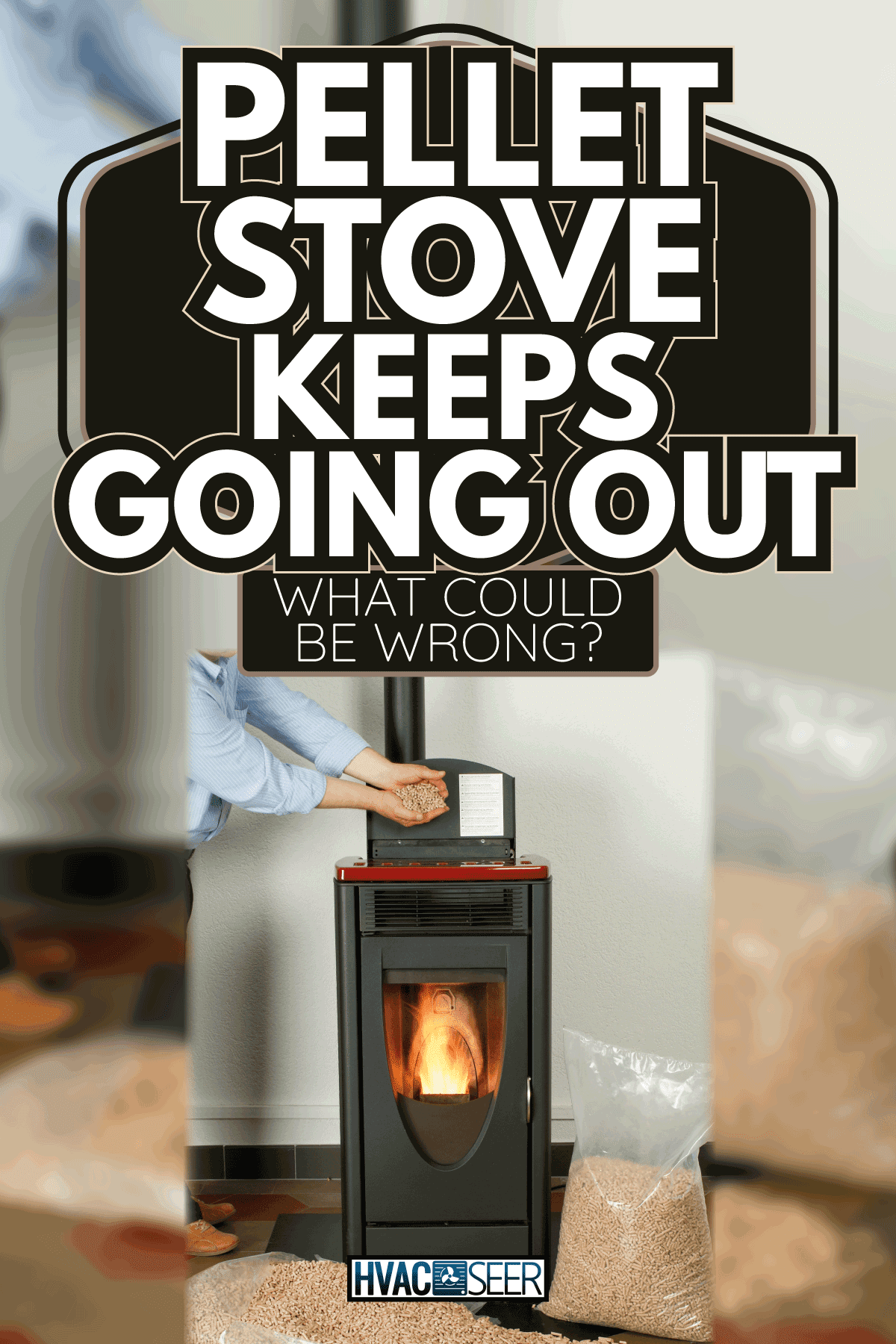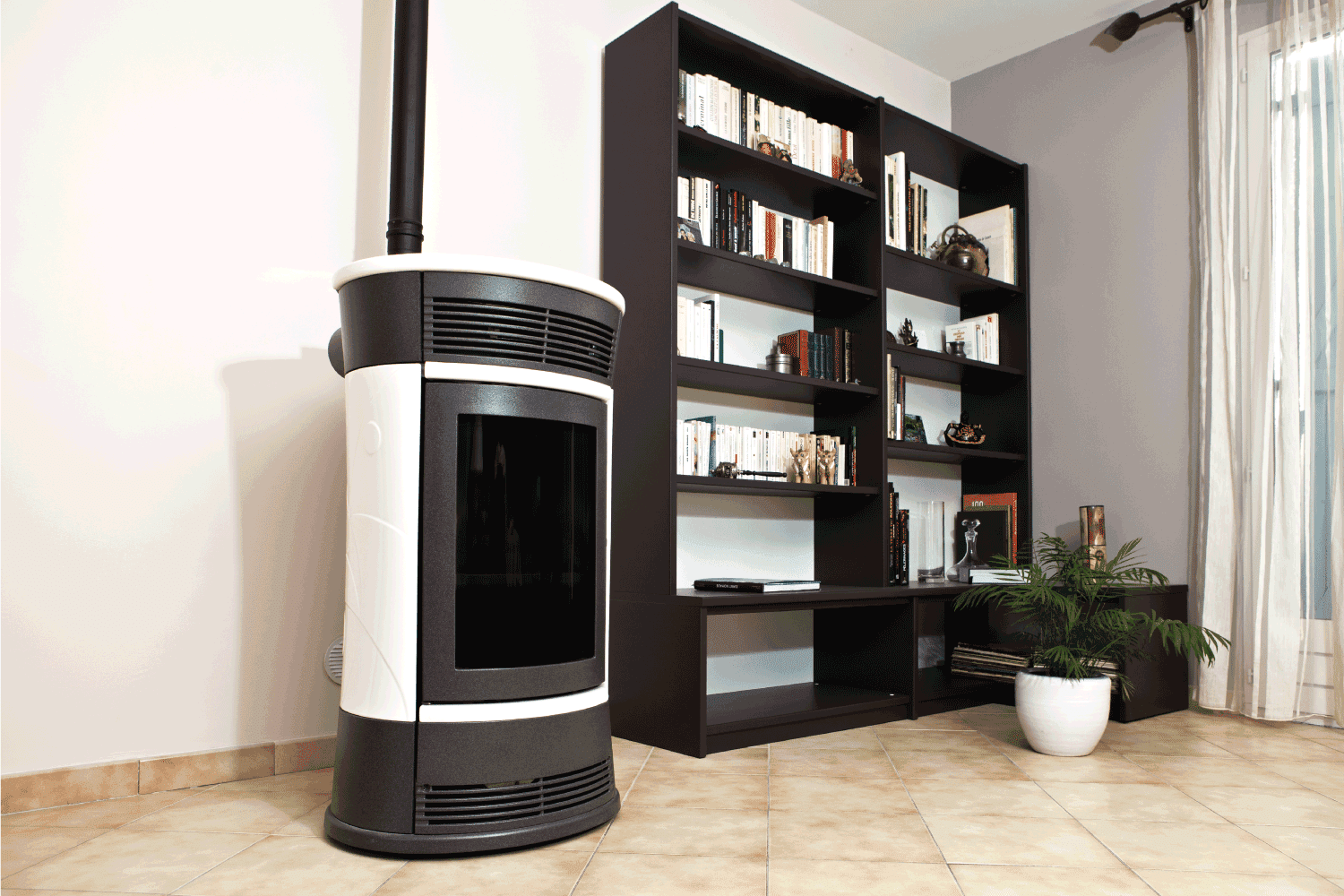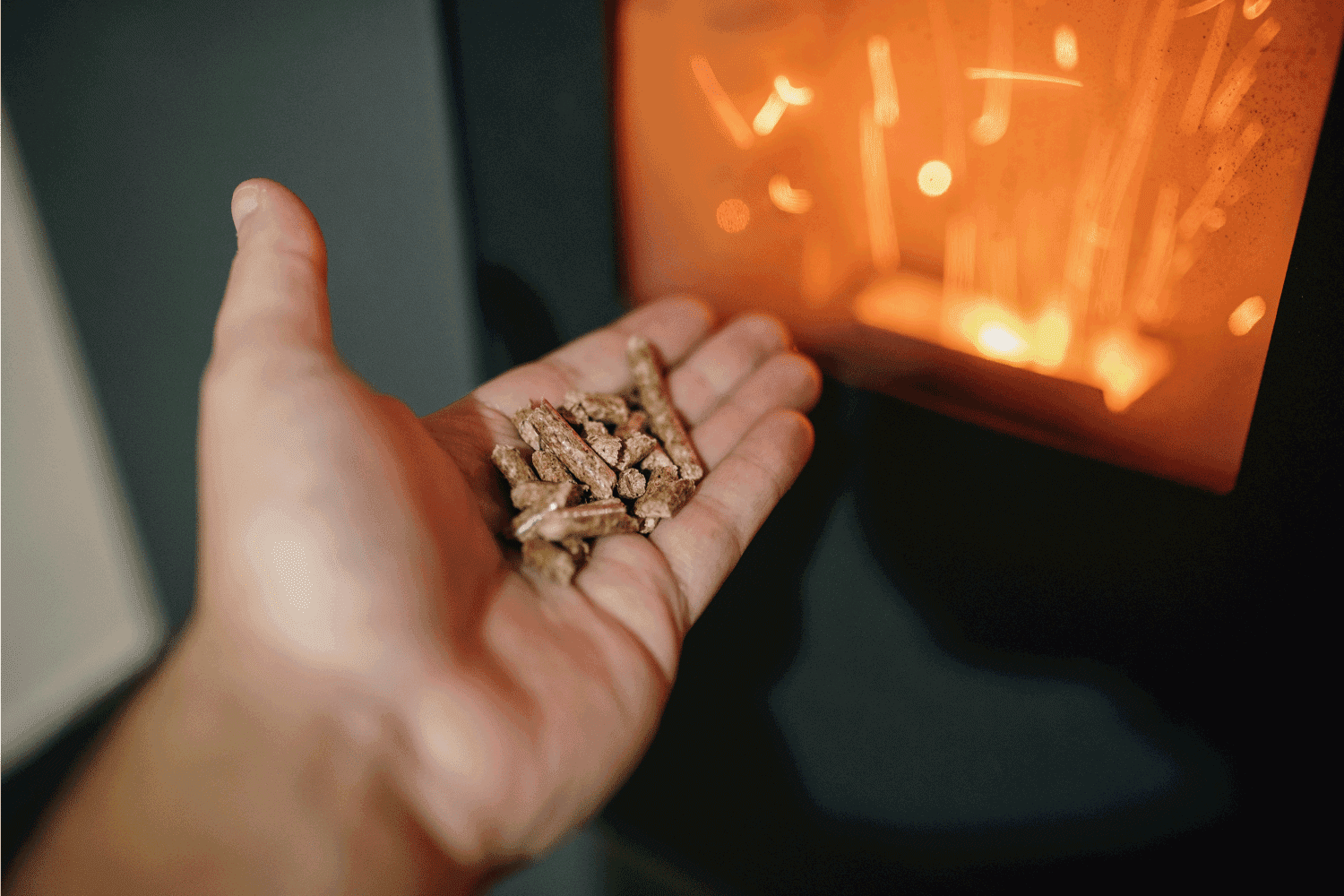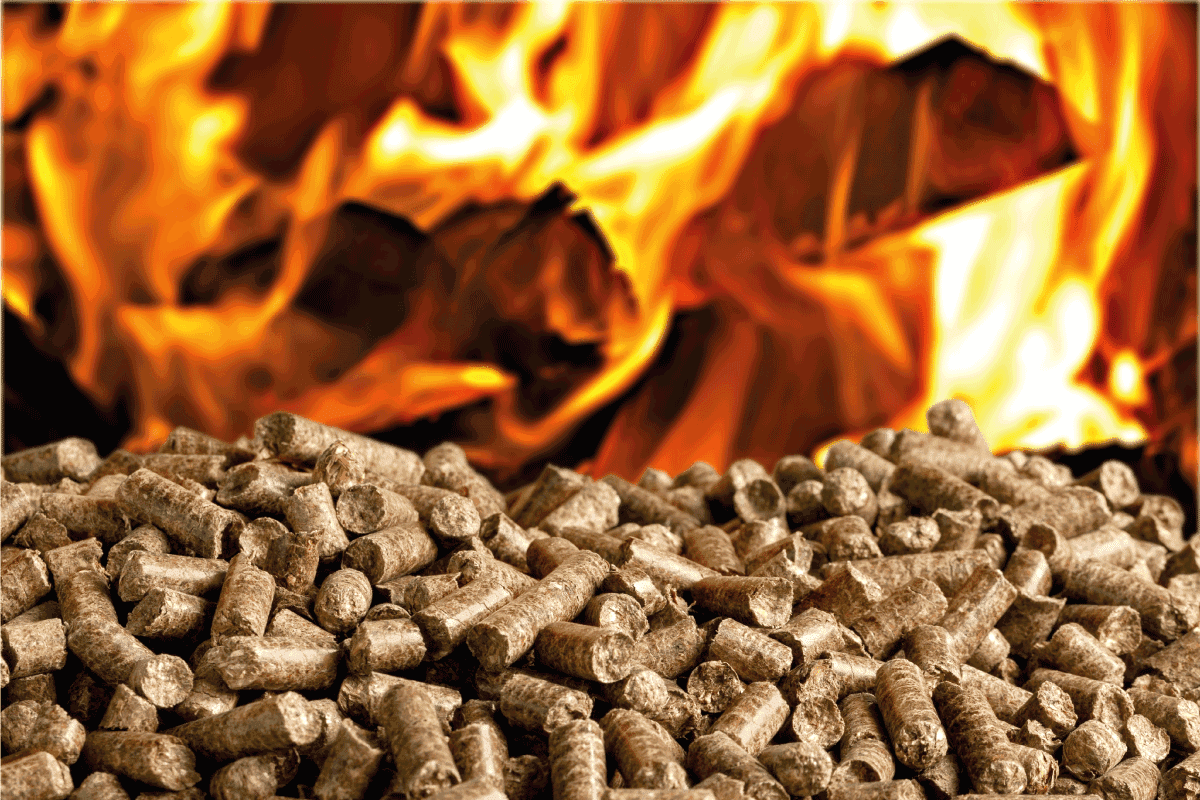Pellet stoves can provide convenience to users by delivering high combustion efficiencies. However, pellet stoves can sometimes go out. In certain cases, this problem occurs more frequently than expected. Now you're wondering, what are the reasons why your pellet stove keeps dying? We researched this topic and here's what we found.
Pellet stove flames can go out abruptly because of different reasons. Some of these causes include:
- Inadequate fuel in the hopper
- Infrequent pellet feeding
- Faulty wiring
- Low stove draft fan position
- Incorrect air damper installation
Troubleshooting a pellet stove for problems will be the first step to enjoying a continuous flame from the appliance. Continue reading as we tackle these issues in greater detail. We’ll also discuss the potential solutions to each problem.
Contents
- 1 Why Does My Pellet Stove Keep Shutting Off?
- 2 How Often Should A Pellet Stove Be Serviced?
- 3 What Is The Life Expectancy Of A Pellet Stove?
- 4 What Causes A Lazy Flame In A Pellet Stove?
- 5 How High Should The Flame Be In My Pellet Stove?
- 6 Why Am I Getting So Much Ash In My Pellet Stove?
- 7 Final Thoughts

Why Does My Pellet Stove Keep Shutting Off?
Different causes for concern exist that can lead to pellet stoves shutting off abruptly or frequently. Here are 5 fairly common reasons and their potential solutions:

Inadequate Fuel in the Hopper
A pellet stove’s hopper houses the pellets. If a particular model has a reasonably large hopper, the stove can hold and use more pellets. Therefore, if the hopper lacks a sufficient amount of pellets, the stove will have difficulty keeping its flame alive.
The potential answer to this problem is to feed more pellets to the hopper. In turn, the pellet stove should maintain functional efficacy for extended periods. Additionally, make sure that the hopper is devoid of dirt and debris. An unclean pellet container can contain blockage, which can prevent the product from working properly.
Infrequent Pellet Feeding
Many pellet stoves require frequent feeding since these products often shut off after 20 to 30 minutes. Specific models have status indicators like an LED light to show you when to refill the hopper with pellets.
Take note that maintaining frequent pellet feeding might not be enough in certain situations. You should use appropriately sized dry pellets. Low-quality pellets may help spark the flame in the stove, but these models might not be sufficient to keep the fire burning continuously.
Check out this product on Amazon.
Faulty Wiring
A faulty electrical system within a pellet stove can prevent it from functioning well. Keep in mind that each pellet stove will have an outlet. This module will help provide energy from the connected power supply to the fans and thermostat. If the wiring in this system breaks or malfunctions, the pellet stove’s flame may go out repeatedly.
If you think that your pellet stove’s internal electrical system is at fault, here are some ways to help troubleshoot and fix the appliance:
- Inspect the circuit breaker and its switches. Investigate if the outlet voltage reaches its limit. Otherwise, the pellet stove will have trouble functioning correctly or not at all. Replace any faulty circuit breaker switch preventing the pellet stove from working efficiently.
- Check the voltage reading. Use a multimeter and set the tool to read AC voltage. The power from the terminal strip connected to the pellet stove should be 120 volts. If it’s not, the appliance cannot draw power from the mains properly. Check and fix damaged or broken wires afterward.
Furthermore, you can learn more about a pellet’s stove energy requirements by reading this post: How Much Electricity Does A Pellet Stove Use?
Check out this circuit breaker on Amazon.
Low Stove Draft Fan Position
A pellet stove’s draft fan blows the exhaust to a connected vent. The position of this part might become misaligned, causing the flame to weaken or go out abruptly. Sometimes the stove may not also produce enough power to spark a flame because of this misalignment.
Adjust the draft fan by repositioning it to the correct location. Follow your owner’s manual to realign this part and avoid making costly mistakes.
Pellet stove variants will often have their draft fans located on the right side. After repositioning the fan, you should feel a draft near the fan upon turning on the appliance. However, make sure not to set the draft higher than necessary as doing so will turn off the flame.
Check out this draft fan on Amazon.
Incorrect Air Damper Installation
The air damper is a pipe connected to the stove’s flame and has the primary purpose of increasing or decreasing oxygen flow. An incorrect installation may reduce the airflow in the unit, causing the flame to go out at quick intervals. Ensure that this component has a secure attachment to the rest of the stove by consulting the instructions.
How Often Should A Pellet Stove Be Serviced?
Pellet stoves should be deep cleaned at least once per week. But each model is different; some stoves may require periodic cleaning at shorter intervals than others. Don’t forget to consult the appliance’s manual to see if the manufacturer made suggestions to care and maintenance frequencies.
You should also think about the stove’s usage. For example, using quality pellets can help reduce soot production, allowing you to clean the appliance’s glass infrequently. Moreover, the ash pan may not need constant cleaning if you don’t use the stove regularly.

What Is The Life Expectancy Of A Pellet Stove?
The average shelf life of a pellet stove ranges from 15 to 20 years. Some models may last longer or shorter, depending on the usage rate. The following is a timetable for certain parts in a pellet stove to help you gauge the right time for a replacement:
- Igniter: 1,500 to 2,000 cycles or about 8 years
- Combustion blower: 15,000 hours or roughly 625 days of nonstop use
- Convection blower: 10 to 12 years
- Gasket: 3 to 5 years
- Burn pot: 5 to 7 years
Also, a pellet stove’s control board may die at an earlier time than expected. If so, this electric component usually breaks down because of exterior hazards like a power surge. Ultimately, replacing the control board can be the best solution to this problem.
Check out this control board on Amazon.
What Causes A Lazy Flame In A Pellet Stove?
Improper airflow can be one of the reasons for a lazy flame. A lazy flame is a low-burning and flickering or shaky flame, and it’s not incredibly hot or efficient in providing adequate warmth to a space.
Take note that a pellet stove requires the correct mixture of air and fuel. Adjusting the fuel also needs you to regulate the air to maintain a proper flame.
Here’s a quick guide on how to adjust a pellet stove’s air and fuel to avoid a lazy flame:
- Push in on the damper handle or rod to reduce the amount of air entering the stove. Keep in mind that the location of this part can depend on specific models.
- Pull the handle or rod if you need to increase the stove's airflow.
- Push or pull this part until the flame increases in size and reduces in flicker.
Also, check out the following video to see the different pellet stove characteristics, which includes the lazy flame:
How High Should The Flame Be In My Pellet Stove?
The flame in a pellet stove should rise to about 4 to 6 inches above the firepot. Making small adjustments to the appliance's different aspects, such as the rate of burning fuel and airflow, can help produce a sufficiently tall flame.
Conventional models may require you to adjust the feed rate using the adjustment rod. Otherwise, updated units might only need you to turn a knob or press a button labeled ‘Flame Height’ to control the flame.

Why Am I Getting So Much Ash In My Pellet Stove?
If your specific pellet stove model is producing more ash than usual, the first step is to consult the owner’s manual. In here, look for the listed ash content. Remember, the higher the ash percentage, the more ash the appliance produces.
Choosing high-quality pellets will often have lower ash percentages than their lower-quality counterparts, yielding less ash in return.

Final Thoughts
A pellet stove’s flame might keep going out more frequently than expected. In certain cases, the appliance may produce a lazy flame or no flame at all.
Troubleshooting the stove will help you find the source of the problem, which can range from insufficient fuel in the hopper to a misalignment of the draft fan’s position. Fixing these issues using the correct methods will help you restore comfortable temperatures in the area near the stove.
Also, don’t forget to check out these other guides about stoves:




